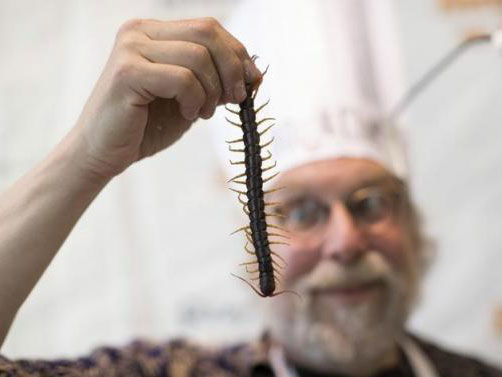Plos Biology:科学家完成蜈蚣基因组测序

一个国际科研小组近日报告说,他们完成了第一种蜈蚣的基因组测序,尽管蜈蚣腿多,但它们的基因数量比人类少约三分之一。
这项研究成果发表在美国《科学公共图书馆生物卷》上,研究以生活在西北欧沿海地区的一种常见蜈蚣作为测序对象,来自10多个国家的106名研究人员参与其中。
研究表明,蜈蚣基因组大小是人类基因组的十分之一,其中含有的基因数量是人类的约三分之二,共1.5万个基因,而人类基因数量目前主流观点认为是约2.3万个。
最有意思的一个发现是,这种蜈蚣体内可能没有视觉基因和生物钟基因。研究负责人之一、英国剑桥大学教授迈克尔·阿卡梅说,这种蜈蚣生活在地下,没有眼睛,因此缺少感光基因并不奇怪,但它们表现出畏惧日光,因此一定有另一种方法感光。“还有一个奇怪之处是,这种动物似乎没有生物钟。如果有的话,它使用的系统一定不同于其他动物。”
研究人员希望这一成果有助寻找蜈蚣毒液相关基因,因为蜈蚣毒液含有大量可入药成分。
蜈蚣有“百足虫”之称,但事实上蜈蚣不可能正好有100条腿,因为无论何种蜈蚣,它的腿的对数总是奇数对。就像本次研究的蜈蚣,足的对数从45对至51对不等,但都是奇数对。
原文标题:The First Myriapod Genome Sequence Reveals Conservative Arthropod GENE Content and Genome Organisation in the Centipede Strigamia maritima
原文摘要:Myriapods (e.g., centipedes and millipedes) display a simple homonomous body plan relative to other arthropods. All members of the class are terrestrial, but they attained terrestriality independently of insects. Myriapoda is the only arthropod class not represented by a sequenced genome. We present an analysis of the genome of the centipede Strigamia maritima. It retains a compact genome that has undergone less gene loss and shuffling than previously sequenced arthropods, and many orthologues of genes conserved from the bilaterian ancestor that have been lost in insects. Our analysis locates many genes in conserved macro-synteny contexts, and many small-scale examples of gene clustering. We describe several examples where S. maritima shows different solutions from insects to similar problems. The insect olfactory receptor gene family is absent from S. maritima, and olfaction in air is likely effected by expansion of other receptor gene families. For some genes S. maritima has evolved paralogues to generate coding sequence diversity, where insects use alternate splicing. This is most striking for the Dscam gene, which in Drosophila generates more than 100,000 alternate splice forms, but in S. maritima is encoded by over 100 paralogues. We see an intriguing linkage between the absence of any known photosensory proteins in a blind organism and the additional absence of canonical circadian clock genes. The phylogenetic position of myriapods allows us to identify where in arthropod phylogeny several particular molecular mechanisms and traits emerged. For example, we conclude that juvenile hormone signalling evolved with the emergence of the exoskeleton in the arthropods and that RR-1 containing cuticle proteins evolved in the lineage leading to Mandibulata. We also identify when various gene expansions and losses occurred. The genome of S. maritimaoffers us a unique glimpse into the ancestral arthropod genome, while also displaying many adaptations to its specific life history.
原文地址:http://www.plosbiology.org/article/info:doi/10.1371/journal.pbio.1002005
作者:Ariel D. Chipman

